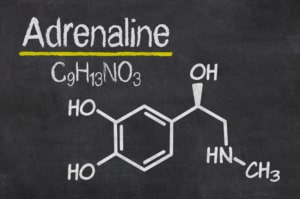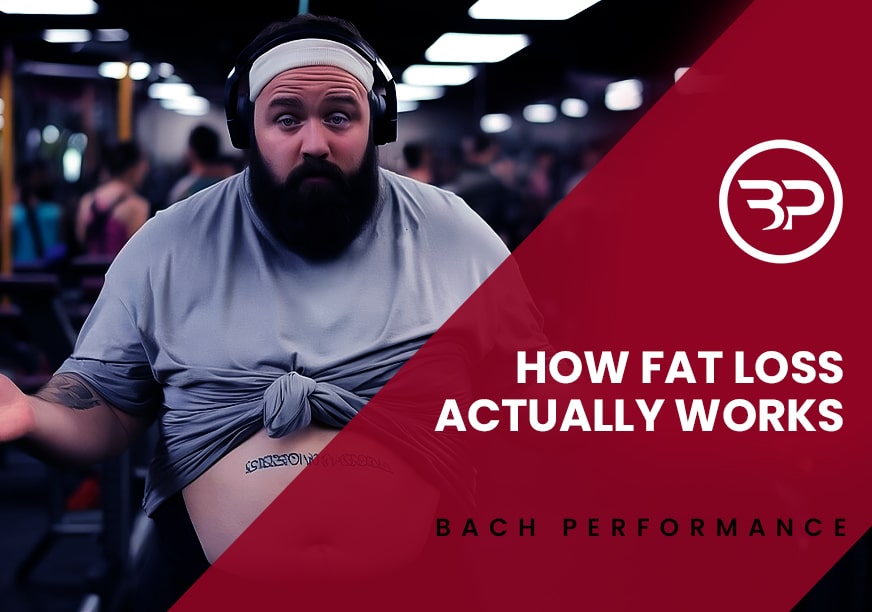Superhuman Strength Explained (And How You can Get Some)
June 20, 2017
Guest Post By Annie Jones
Have you ever performed way beyond what you thought was your physical maximum?
It seemed like the adrenaline kicked in to make you explode.
There were no boundaries, no limits.
Those moments are rare, but they can teach us something really important:
The Mind/Muscle Connection.
The connection between the muscles, neurons, and our brains might be the reason behind these extraordinary moments when we become superhumans. The surge of energy and fearless approach pushes us through almost any task with few problems.
We are all striving for bigger muscles, more strength and better health. How can we best harness the system that makes us superhuman in short extreme periods of danger?
Let’s find out.
The Neuro-Muscular Connection
The Central Nervous System (CNS) is like an energy highway, starting from the back of the head and going through the spine.
To perform the simplest movement like walking, your brain sends the information to your CNS, which hands it to the Peripheral Nervous System (PNS) which sends the impulses further to the nerves that are responsible for individual muscles.
This network of channels and nerves is very complex, and performs on a cellular level, taking around a thousandth of a second to perform. The nerves that are connected to the muscles release a chemical called acetylcholine and cause the muscles to contract.
Creating movements involves a lot of muscles, which contract and relax at the same time, moving our limbs and body to achieve the desired state. The muscles themselves change the value by at least 30% to achieve full contraction.
The impulse communication between muscles and the brain goes both ways since the neurons receive information from muscle membranes and inform the brain about the muscle’s current state. That is the simplest explanation of the connection and functioning of the brain and muscles.
What happens when the adrenaline kicks in?
 When the unexpected things and situations happen, our bodies react differently. When you or someone you care about is in peril, the fear triggers the brain. The adrenal glands release adrenaline, shifting our body into a state of high readiness, or excited state.
When the unexpected things and situations happen, our bodies react differently. When you or someone you care about is in peril, the fear triggers the brain. The adrenal glands release adrenaline, shifting our body into a state of high readiness, or excited state.
The heart pumps faster. The pupils dilate. Respiration gets faster. Muscles become excited, allowing for tight contractions.
The increased blood flow allows more energy into the muscles during this state of high awareness, bringing more glucose into muscles. In these moments, you can be capable of lifting a 3000-pound car for example.
But there is a catch behind this and other stories of inhuman strength that you may have heard about.
When these situations occur, you are guaranteed to reach a higher level of strength than you normally would. But that won’t be as miraculous as it is in the case of an experienced 245-pound lifter.
The amount of power your muscles can generate depends on your overall physical state and the level of your fitness and overall strength. For those short moments, you go into Hulk mode.
Can we implement this into our workout regimens?
 While you’re working out to gain more strength and bigger muscles, the neuro-connectivity between your brain and muscle membranes (through CNS and PNS) strengthens as well. Working out will get you stronger, and you’ll have a better chance to be an unstoppable force when you go ballistic from fear and adrenaline surge.With basic knowledge about strength and muscle building, one would easily come to an idea to try to implement the concept of the hysterical strength into the muscle-building regimen.
While you’re working out to gain more strength and bigger muscles, the neuro-connectivity between your brain and muscle membranes (through CNS and PNS) strengthens as well. Working out will get you stronger, and you’ll have a better chance to be an unstoppable force when you go ballistic from fear and adrenaline surge.With basic knowledge about strength and muscle building, one would easily come to an idea to try to implement the concept of the hysterical strength into the muscle-building regimen.
On paper, the idea definitely grabs attention, especially for the individuals who plateaued or are in fierce competition. Breaking that hard-earned PR with this concept seems like a dream come true. But it’s more complicated than that.
These short moments are so short for a reason.
The state you’re in when you reach hysterical strength is not natural and can be compared with an electrical discharge.
It’s powerful but very short-lived.
The situation where you go way beyond your physical capabilities to save someone’s life can injure you both physically and mentally. These short bursts can lower your immunity, cause muscle tears, joints dislocation, blood flow problems, bloody red eyes from burst capillaries, make you prone to stress, and more.
That’s why the idea of implementing this into your workout regime isn’t good. But, there are things that you can consider though.
How can we use the neuro-muscular connection?
 Since we now know how do the muscles get stimulated to contract and make a movement, we can utilize this connection to get stronger, faster, and better overall. Many researchers and studies have shown that activating more muscle fibers before exercise will drastically improve your performance. With more muscle fibers activated, the neuro connection with the muscle gets stronger and multiplies the information flow in both neuro systems that process orders from the brain and communication from the muscles.
Since we now know how do the muscles get stimulated to contract and make a movement, we can utilize this connection to get stronger, faster, and better overall. Many researchers and studies have shown that activating more muscle fibers before exercise will drastically improve your performance. With more muscle fibers activated, the neuro connection with the muscle gets stronger and multiplies the information flow in both neuro systems that process orders from the brain and communication from the muscles.
There are techniques that help you nurture and strengthen your neuro-connectivity with your muscles, alongside prolonging the overall performance boost. This type of strength is different from the traditional strength achieved through training, because it is based on the energy within, similarly like you trigger the adrenaline rush and lift the 3000+ pound car.
Here’s how to work on your neuro-muscular connection and utilize it to gain more strength:
-
Incorporate small but tense shake-ups throughout the day
Several times during the day, contract your muscles strongly and hold for a few seconds. It can be a short routine, containing 3-5 repetitions, but it will require from you to contract as hard as you can. You can focus on particular muscle groups or the whole body.
-
Flex your muscles after a shake-up
Short flexing sessions will ensure a better blood flow, and the muscle’s natural ability to contract. Better the contraction, the stronger you get.
-
Never go all-out during a workout
Pavel Tsatsouline, the author of the best-selling book Power to the People, says that strength is a skill. You don’t need to work your muscles until they collapse. Perform some good reps, and stop before you get fatigued.
-
Develop a strong grip
Your hands are the parts of your body with the most nerve endings. Developing a strong grip will, besides helping you get better at every exercise, stimulate the connection between muscles and neurons.
-
Shake your muscles between sets
This is one of the techniques that will stimulate both blood flow and neuro connections throughout the muscles, and prepare you better for the next set. So next time you’re between sets, shake the targeted muscle group a bit. You’ll feel the surge of energy – not like hysterical strength, but good enough to stimulate you to crush the next set.
Work your neuro-muscle connections and make your muscles jump to your commands
As you can see, the neuro-muscular connection is a pretty important factor in the way our muscles are functioning. The difference it makes is not to be disregarded. When worked on correctly, it might boost you to a new level of fitness, or make you capable of superhuman feats, at least for a short burst of time.
 About The Author
About The Author
Annie Jones is the person behind BoostBodyFit.com. She started off a bit on the chubby side but went through a transformation. She looks and feels great.








